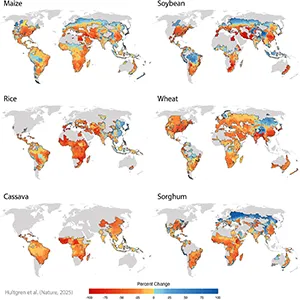Family Planning – Pharmacy Times

Report on Pharmaceutical Counseling and its Contribution to Sustainable Development Goals in Reproductive Health
Case Study 1: Prenatal Vitamin Supplementation
This case study directly addresses Sustainable Development Goal 3 (Good Health and Well-being), specifically focusing on Target 3.1 (reduce global maternal mortality) and Target 3.2 (end preventable deaths of newborns). Pharmaceutical guidance on prenatal vitamins is a critical intervention for achieving these outcomes.
Recommendations and SDG Alignment:
- Early Supplementation: It is recommended that supplementation begins at least one month prior to conception. This proactive approach is fundamental to ensuring maternal health from the earliest stage, in line with SDG 3.
- Folic Acid: A daily intake of 400 μg to 800 μg is essential. This directly supports SDG Target 3.2 by significantly reducing the risk of neural tube defects in the developing fetus.
- Iron: The inclusion of iron combats maternal anemia, a major contributor to maternal morbidity and mortality, thereby advancing SDG Target 3.1.
- Docosahexaenoic Acid (DHA): DHA is vital for fetal brain and eye development, contributing to the broader SDG 3 objective of ensuring healthy lives and promoting well-being for all at all ages.
Case Study 2: Ovulation Prediction Kits for Family Planning
The provision of information on ovulation prediction kits (OPKs) supports SDG 3 (Target 3.7) and SDG 5 (Gender Equality, Target 5.6), both of which call for universal access to sexual and reproductive health-care services, including family planning, information, and education.
Recommendations and SDG Alignment:
- Mechanism of Action: Educate the user that OPKs function by detecting the surge in luteinizing hormone (LH) that precedes ovulation by 24 to 36 hours. This knowledge empowers individuals to manage their reproductive health, a key tenet of SDG 5.
- Usage Protocol: For a standard 28-day cycle, testing should commence around day 10. Consistent daily testing, preferably with concentrated morning urine, improves accuracy.
- Product Options: Explain the availability of different formats, such as simple test strips and clear-result digital tests. Offering choice promotes accessibility and user confidence, aligning with the principles of universal healthcare access under SDG 3.
- Counseling on Limitations: Inform the user that conditions like polycystic ovary syndrome (PCOS) or certain medications can impact accuracy. This comprehensive counseling ensures informed use, a critical aspect of effective reproductive health services (SDG 3.7).
Case Study 3: Pregnancy Test Accuracy and Interpretation
Guidance on home pregnancy tests is integral to fulfilling SDG 3 (Target 3.7) and SDG 5 (Target 5.6). Accurate and early pregnancy detection enables timely access to prenatal care and empowers women with the knowledge to make informed decisions about their health and future.
Recommendations and SDG Alignment:
- Principle of Detection: Tests detect human chorionic gonadotropin (hCG), a hormone produced following implantation.
- Optimal Timing for Accuracy: The most reliable results are obtained on or after the first day of a missed period. Providing this information prevents false negatives and associated anxiety, promoting mental well-being (SDG 3).
- Best Practices: Recommend using first-morning urine, as hCG levels are most concentrated. This ensures the highest degree of accuracy from available tools.
- Result Interpretation and Follow-up: Clarify that even a faint positive line indicates pregnancy. If the result is negative and menses have not begun, advise retesting in several days or consulting a healthcare provider. This guidance ensures a clear pathway to care, supporting the framework of universal health access.
Case Study 4: Access to Emergency Contraception
This case is a direct application of SDG 3 (Target 3.7) and SDG 5 (Target 5.6), which champion universal access to family planning and the upholding of reproductive rights. The pharmacist’s role is crucial in providing timely and non-judgmental access to emergency contraception (EC).
Recommendations and SDG Alignment:
- Effective Time Frame: Levonorgestrel 1.5 mg (e.g., Plan B One-Step) is effective for up to 72 hours after unprotected intercourse, with peak effectiveness within the first 24 hours. Ensuring access within this window is a critical component of reproductive healthcare services.
- Alternative Options: Inform the user about prescription options like ulipristal acetate (Ella), which is effective for up to 5 days and may be more suitable for individuals with a higher body mass index. This provision of comprehensive information supports informed choice, a key aspect of SDG 5.
- Patient Education: It is vital to clarify that EC is not an abortifacient and does not work if a pregnancy is already established. Counseling on potential side effects, such as nausea or menstrual changes, is part of providing comprehensive care under SDG 3.
1. Which SDGs are addressed or connected to the issues highlighted in the article?
-
SDG 3: Good Health and Well-being
The article directly addresses health and well-being by focusing on reproductive health. It covers topics such as prenatal care to prevent birth defects (Case 1), fertility awareness (Case 2), pregnancy confirmation (Case 3), and access to contraception (Case 4). The pharmacist’s role in providing accurate health information and guidance is central to promoting positive health outcomes for women.
-
SDG 5: Gender Equality
The article connects to gender equality by empowering women with the knowledge and tools to make informed decisions about their own bodies and reproductive lives. By discussing access to prenatal vitamins, ovulation kits, pregnancy tests, and emergency contraception, the article highlights the importance of ensuring women have control over their reproductive health, which is a key component of gender equality.
2. What specific targets under those SDGs can be identified based on the article’s content?
-
Target 3.1: By 2030, reduce the global maternal mortality ratio to less than 70 per 100,000 live births.
- The article supports this target through the discussion in “Case 1: Prenatal Vitamins.” The pharmacist’s recommendation for women trying to conceive to take folic acid is a crucial preventive health measure. Proper prenatal care, including folic acid supplementation to “reduce the risk of neural tube defects,” contributes to healthier pregnancies and reduces complications for both mother and child, which is integral to lowering maternal mortality.
-
Target 3.7: By 2030, ensure universal access to sexual and reproductive health-care services, including for family planning, information and education, and the integration of reproductive health into national strategies and programmes.
- The entire article is an example of this target in action. The pharmacist provides essential information and education on various aspects of sexual and reproductive health. This includes family planning for conception (Case 1 and Case 2), pregnancy detection (Case 3), and contraception to prevent unintended pregnancy (Case 4). The availability of Over-The-Counter (OTC) products like ovulation kits, pregnancy tests, and emergency contraception demonstrates access to these services.
-
Target 5.6: Ensure universal access to sexual and reproductive health and reproductive rights as agreed in accordance with the Programme of Action of the International Conference on Population and Development and the Beijing Platform for Action and the outcome documents of their review conferences.
- This target is addressed by empowering the women in each case study with the means to exercise their reproductive rights. “Case 2: Ovulation Prediction Kits” and “Case 3: Pregnancy Testing” provide women with tools to understand their own fertility and confirm pregnancy. “Case 4: Emergency Contraception” is a direct example of providing access to contraception, allowing a woman to make a critical decision about her reproductive future after unprotected intercourse. The pharmacist’s role in providing non-judgmental information and access to these products is key to upholding these rights.
3. Are there any indicators mentioned or implied in the article that can be used to measure progress towards the identified targets?
-
Proportion of women of reproductive age who have their need for family planning satisfied with modern methods (Indicator 3.7.1 and 5.6.1).
This indicator is implied throughout the article. The discussion of ovulation prediction kits (OPKs) for conception, and especially the availability and use of emergency contraception (Plan B One-Step), are examples of modern methods for family planning. The article shows individuals actively seeking to satisfy their family planning needs, whether for conceiving or for preventing pregnancy.
-
Access to and knowledge of reproductive health services and products.
While not a formal UN indicator, this is strongly implied. The questions asked by the women (JS, SS, ER, MS) highlight a gap in knowledge. The pharmacist’s detailed answers and the availability of OTC products like prenatal vitamins, OPKs, pregnancy tests, and emergency contraception serve as direct evidence of both access to products and the provision of crucial health information. Measuring the availability of these products and the public’s understanding of their use would be a way to track progress.
-
Uptake of preventive health measures during preconception and pregnancy.
This is implied in “Case 1: Prenatal Vitamins.” The pharmacist’s recommendation for folic acid intake “at least 1 month before conception” to “reduce the risk of neural tube defects” points to a key preventive health action. The rate of women following this advice could be an indicator of progress in maternal and child health.
4. Table of SDGs, Targets, and Indicators
| SDGs | Targets | Indicators (Identified or Implied in Article) |
|---|---|---|
| SDG 3: Good Health and Well-being | Target 3.1: Reduce global maternal mortality. | Uptake of preventive prenatal care, specifically the use of folic acid supplements by women planning to conceive to reduce the risk of neural tube defects. |
| SDG 3: Good Health and Well-being & SDG 5: Gender Equality |
Target 3.7 / 5.6: Ensure universal access to sexual and reproductive health-care services, information, and education. |
|
Source: pharmacytimes.com

What is Your Reaction?
 Like
0
Like
0
 Dislike
0
Dislike
0
 Love
0
Love
0
 Funny
0
Funny
0
 Angry
0
Angry
0
 Sad
0
Sad
0
 Wow
0
Wow
0





































![Lancaster homeowner’s energy-efficient renovation sparks clash over historic preservation [Lancaster Watchdog] – LancasterOnline](https://bloximages.newyork1.vip.townnews.com/lancasteronline.com/content/tncms/assets/v3/editorial/9/ed/9ed03d32-c902-44d2-a461-78ad888eec38/69050b156baeb.image.png?resize=150,75#)








































